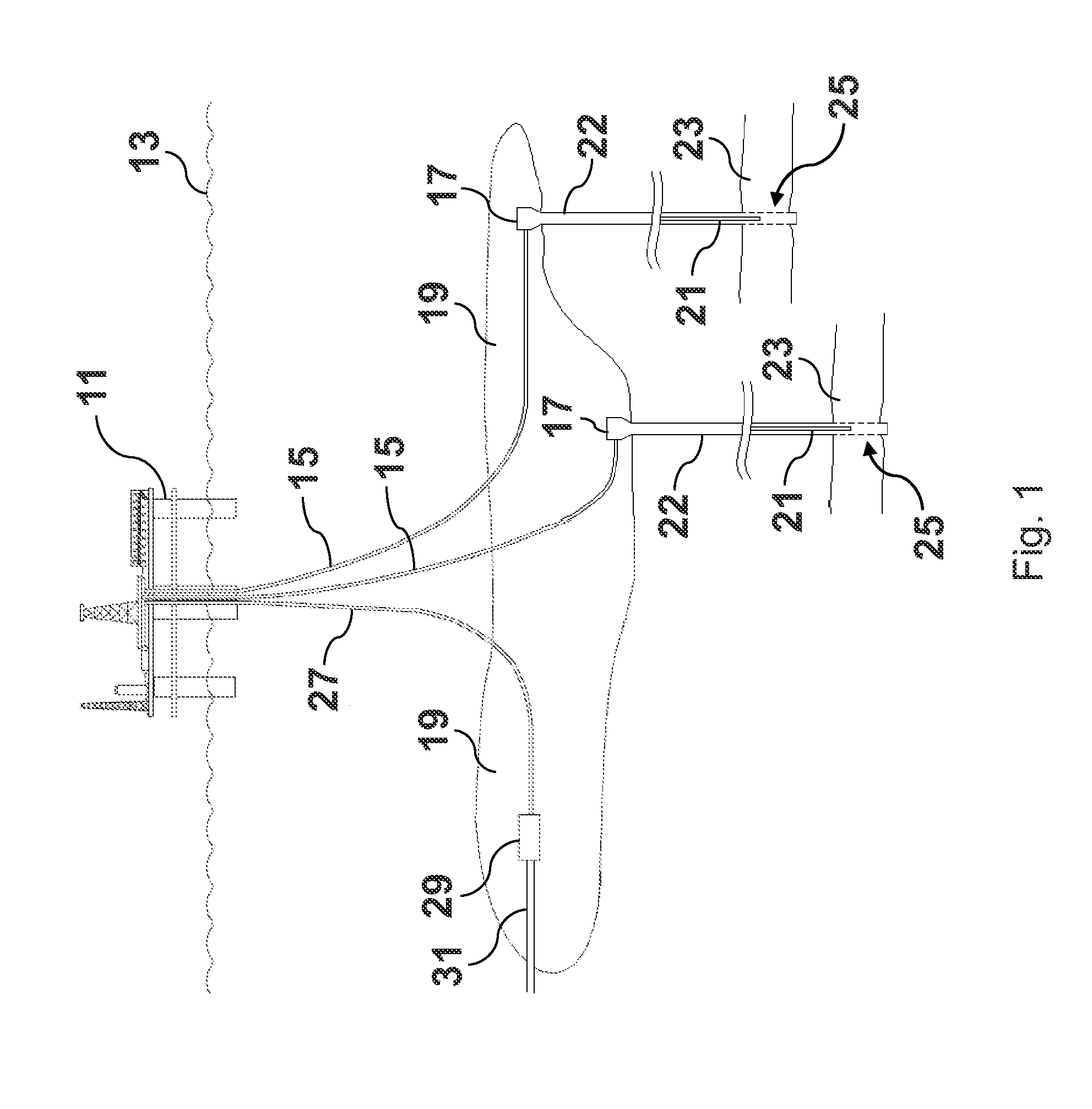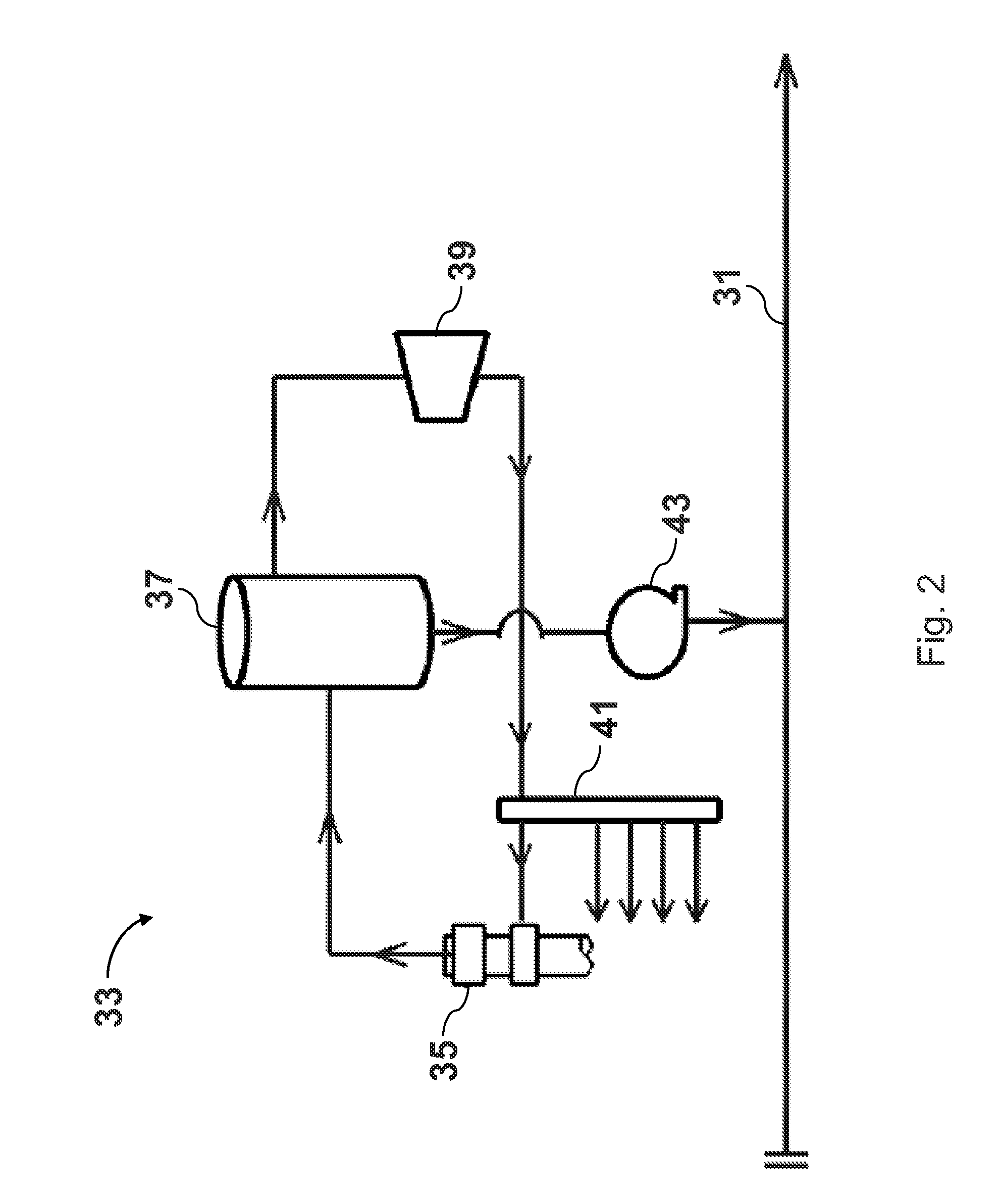System and method for producing hydrocarbons from a well
a well and hydrocarbon technology, applied in the direction of fluid removal, earth-moving drilling, borehole/well accessories, etc., can solve the problems of not being able to produce liquids to the surface naturally or economically, the lift performance of oil wells suffers, and the well cannot produce liquids to the surface. natural or economic, etc., to achieve easy transportation, reduce backpressure, and increase the pressure of liquid fluid
- Summary
- Abstract
- Description
- Claims
- Application Information
AI Technical Summary
Benefits of technology
Problems solved by technology
Method used
Image
Examples
Embodiment Construction
[0017]The present invention now will be described more fully hereinafter with reference to the accompanying drawings, in which some, but not all embodiments of the invention are shown. Indeed, this invention may be embodied in many different forms and should not be construed as limited to the embodiments set forth herein; rather, these embodiments are provided so that this disclosure will be thorough and complete, and will fully convey the scope of the invention to those skilled in the art. Like numbers refer to like elements throughout.
[0018]Referring to FIG. 1, an offshore oil production platform 11 is shown at the surface 13 of the sea. Platform 11 is shown as a floating platform, but is merely meant to be representative for any offshore oil platform known in the art, such as jack-up or tension leg platforms. Risers 15 extend from platform 11 to subsea wellheads 17. Wellheads 17 are located at the sea floor 19. Wellheads 17 are positioned above, and in fluid communication with, a...
PUM
 Login to View More
Login to View More Abstract
Description
Claims
Application Information
 Login to View More
Login to View More - R&D
- Intellectual Property
- Life Sciences
- Materials
- Tech Scout
- Unparalleled Data Quality
- Higher Quality Content
- 60% Fewer Hallucinations
Browse by: Latest US Patents, China's latest patents, Technical Efficacy Thesaurus, Application Domain, Technology Topic, Popular Technical Reports.
© 2025 PatSnap. All rights reserved.Legal|Privacy policy|Modern Slavery Act Transparency Statement|Sitemap|About US| Contact US: help@patsnap.com



